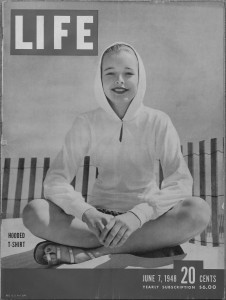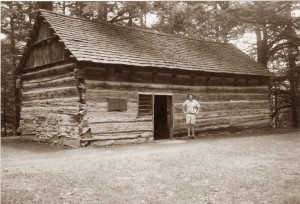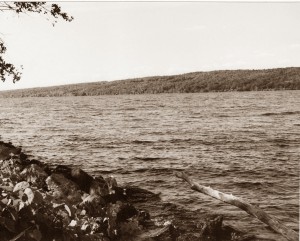 BARBARA REILLY is a Historical Fantasy, meaning the story is set in a recognizable past time and place but contains fantasy (magical) elements. BARBARA REILLY is set in two time periods. The main action takes place in rural upstate New York in 1948. Other parts of the story occur in the same locale in 1779. How these two times tie together forms the central dynamic of the mysterious family tale.
BARBARA REILLY is a Historical Fantasy, meaning the story is set in a recognizable past time and place but contains fantasy (magical) elements. BARBARA REILLY is set in two time periods. The main action takes place in rural upstate New York in 1948. Other parts of the story occur in the same locale in 1779. How these two times tie together forms the central dynamic of the mysterious family tale.
1779 and 1948 were important years for America. 1779 represents the height of America’s Revolutionary War for independence from Britain, while 1948 falls squarely in America’s postwar period after World War II, when the country was emerging from the Great Depression and its battles of liberation in Europe and the Pacific, and was swiftly changing into the preeminent world power of the late twentieth century.
What was life like in those times? How were they different from today? And from each other? What details were seeded into BARBARA REILLY to imbue the book with the authentic feel already being praised by readers?
1779: Welcome to the Forest
1779 embodied the twilight of the Iroquois empire. The Iroquois had long occupied their traditional homeland, which they saw as one great longhouse spread across upper New York State. But they had already harshly felt the rub of the Colonies shouldering into their lands from the south and east. As the war between the British and the Colonies escalated, the Iroquois tried to remain neutral, while maintaining their long-established alliances with the Crown. Ultimately they were drawn into the conflict, which caused them to lose most of their homeland. This did not mean they ceased to exist, but the war led to the reservation system, resulting in drastic changes to their lifestyle as a people.
In 1779 the wide swath of Iroquois lands was forest, stretching from the Adirondacks to Lake Erie. Sprinkled across it were dozens of their towns, connected by trails. Most of the houses were built of logs, the Iroquois having adopted the Colonial building style, over their earlier bark-and-pole longhouse constructions. Each town maintained crop fields and an orchard, the Iroquois being farmers as well as hunters. They grew many types of vegetables and much corn for winter. The orchards produced apples and peaches.
There were few horses in 1779 in the Iroquois homeland, but the Iroquois were used to walking their well worn trails through their beautiful country. Hunting parties traveled to outlying hunting grounds. Runners relayed messages from town to town. The trails were also used by representatives from each village journeying to central locations or the capitals of the six nations that made up the Confederacy. The Chiefs and Clan Mothers of each town of the Seneca, Cayuga, Onondaga, Oneida, Mohawk, and Tuscarora would come together to decide policies for the group as a whole, while upholding the rights of individuals and their own communities as well. In this way, the Iroquois form of government presaged the democratic system of the United States.
The Lakes
The forest of the Iroquois was bisected in its midsection by eleven long lakes running north to south. These today are called the Finger Lakes. Most of them bear Iroquois names, such as Keuka, Honeoye, Canandaigua, and Skaneateles. The longest lake is forty miles long. The deepest lake measures 675 feet deep. The drainage into the lakes is generally well-watered by rain, resulting in many streams and waterfalls, especially toward the southern end of the lakes, where the surrounding ground rises.
One of the tallest waterfalls in eastern America empties into Cayuga Lake near Trumansburg, New York. This is Taughannock Falls, the Great Falls in the Woods. BARBARA REILLY takes place near Taughannock Falls and the village of Trumansburg. The area was part of the Cayuga homeland in 1779. One can find sites of their towns today in the farmland and woods here, although not much remains after all the intervening years of snow and rain.
1948: Small Towns and Family Farms
By contrast, the land around Trumansburg in 1948 was mostly farms. The wide variety of agriculture practiced included dairies, sheep and goat farms, orchards, berry farms, vineyards, hay and grain operations, hog yards, and pastures. Farms usually retained a mix of hedgerows, woodlots and forest sections. The area between the lakes thus remained more diverse and balanced than the flatter, more heavily cropped Central Plain to the north, though it had become much more open than the hillier, more marginal Southern Tier south of the lakes.
Broadly speaking, 1948 represented the gateway to the modern America. The country had just harnessed its full economic potential to defeat Germany and Japan. It would not return to the primarily agrarian lifestyle embraced in its heartland up through the Depression and war years. But the boom-time of the 1950s was still a few years off. Thus the late 40s was a period of transition. Millions of returning soldiers were trying to find jobs in industries not yet fully turned over to peacetime. Millions of women were struggling to adjust to new conditions now that the jobs they had worked while the men were at war were ended.
Despite the vast seas of change moving the country in 1948, rural areas like Trumansburg, New York remained temporarily much as before. Commerce continued to center around local family businesses and family farms, with communities oblivious to the notion that nationwide corporations and huge agricultural concerns would come to dominate the markets in the future.
Television hadn’t yet appeared. People went to the movies more than today. They listened to the radio and avidly read books. Neighbors knew each other. Language, of course, followed its own trends of the day. “Swell” hadn’t yet yielded to “cool, daddy” or “groovy,” or “right on.” Cash was sometimes called “lettuce” or “dough.” Prices were lower (ground beef 55cents/pound; onions 49 cents/10 pounds; cantaloupe 43 cents), although wages were lower, too. But food was more nutritious, due to greater soil fertility than today and less chemical methods.
Innocence and Technology

This Life Magazine might have been on Barbara Reilly’s family coffee table during the events portrayed in the book.
Many product innovations and improvements were developed in the 1930s. During those Depression years, however, many people did not have money to buy much beyond necessities. Then came the war, when consumer goods were rationed. The post war years therefore saw an explosion of pent-up demand meeting a growing avalanche of available consumer products. As personal income began to rise, strong demand spurred sales of appliances, cars and trucks, clothing, and all manner of luxury items. Nevertheless, in rural America, this torrent of economic activity took a good deal longer to arrive.
Basically though, despite the arising of the “consumer society,” 1948 represented a time of innocence across America. It was perhaps the last year before the modern age truly began. The time bespoke people’s ignorance of the country’s rapidly evolving world role. It reflected an unknowing of the true implications of the Cold War and Communism. It unconsciously confessed its unawareness of the technological advances incubated by World War II itself. These advances would actually trigger the modern age. They included jet planes, the atom bomb, early computers, and rocket propulsion, which would, within a few short decades bring us to rapid world travel, the Vietnam War, the internet, and the moon.
1948 was a time to savor, just as childhood is a time to remember with fondness, while not in any way minimizing the challenges faced every day by those experiencing it.
This is the first in a series of articles exploring The World of BARBARA REILLY.
Copyright 2012 Carl Grimsman, All rights reserved.



